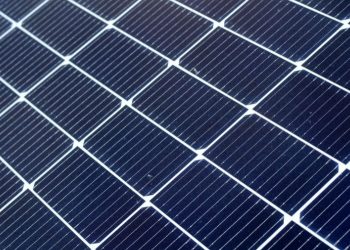Tariffs have dominated the conversation over the last few weeks as the new administration took office and began establishing their new policies. Regardless of who is in office or what the intention of these tariffs may be, the end result is always the same – consumers will end up having to pay more for goods and services while the tariffs are in effect.
This isn’t unusual in and of itself, but this latest batch of tariffs is set to impact the solar industry, and as a solar provider with an eye for education and simplification, we thought it would be helpful to break down the situation and provide guidance on how to avoid paying more for your installation. Let’s dig in on tariffs and solar, with the goal of providing context, information, and ultimately a solution to the problem of rising prices.
Generally speaking, tariffs are taxes imposed by a government on the import or export of goods. They can be used to generate revenue, but are also a potent tool for regulating foreign trade, if not an altogether effective one.
The most important thing to remember is that tariffs are a tax on the import and export of goods, so it costs more to bring things in or send them out, depending on the situation at hand. A government might propose a tariff on foreign imports to encourage domestic production, to censure a foreign government for behavior it disagrees with, or to apply pressure on them to encourage a desired course of action.
Regardless of what the motivation is, the end result is almost always the same – rising import and export costs increases the price of goods and services for consumers domestically. To put it simply, it’s going to cost more to install solar this year because of tariffs. That fact is unfortunately unavoidable, as we will discuss in the following sections. Because the cost of components and materials for solar and storage equipment is increasing, we will necessarily see an increase in the cost to install a solar system.
Tariffs on China
One of the most significant situations regarding tariffs and the solar industry is the situation surrounding anode materials. Used to make battery storage systems, these anode materials are supplied to domestic producers primarily by Chinese imports, with supply chains outside these current options being years away from operation. The petition for these tariffs was started late last year, and we may not see a final decision on them for the first few months of this year, but with a proposed tariff of 920%, the application of this tax will have a significant impact on the US storage market. Supplemental supply chains for anode materials like lithium iron phosphate and synthetic graphite are not expected to be operational until 2030 at the earliest, increasing the urgency around the application of this tariff for the solar industry.
There is also the issue of increasing percentages on other existing tariffs. There are existing tariffs on Chinese solar products, namely a 25% tariff on tungsten products and a 50% tariff on solar wafers and polysilicon. The new administration has announced that those import tariffs will be increased by 10%, bringing them to 35% and 60% respectively.
Tariffs on Canada & Mexico
The situation with tariffs on Canada and Mexico is evolving, and between the time of researching and writing this article, the tariffs on both countries were postponed by 30 days due to ongoing negotiations. That being said, the current proposal outlined by executive order is for a 25% tariff on imports from Canada and Mexico, and unless something changes in the next 30 days, that tariff will go into effect.
There is currently no list of goods or products covered by this tariff, save that it would exclude “energy or energy resources”, which excludes solar energy. All things considered, this would be an unprecedented tax on solar goods in addition to other potential products, and would no doubt have an impact on the cost of a solar installation in 2025
With the potential tariffs on solar products from Canada and Mexico, and the impending tariffs on anode materials from China, the import and domestic production costs of solar technology are about to increase. It is hard to say for sure exactly by how much, or for how long. The supply chain for anode materials may eventually allow importers to avoid costly tariffs on Chinese materials, but estimates currently put the availability of that alternative route at more than 5 years away.
The tariffs on Canada and Mexico are, transparently, an attempt to encourage both countries towards a desired outcome, and as such they could last for the next 4 years or disappear overnight depending on how they choose to respond. The bottom line is that you, the customer, will soon be paying more for a solar system than you would if you invested today, and that is an unfortunate but avoidable expense.
The purpose of this article is to make you aware of these changes so that you can make an informed decision. Tariffs may not be the most exciting topic of conversation, but they will impact the cost of a solar investment this year, and you deserve to know about your options before these taxes go into effect. The value proposition of solar is strong despite any external market fluctuations, and we’re confident that we will be able to continue helping customers achieve meaningful returns, but we’d also rather that you avoid an increased cost which has no real reason for being here in the first place. If you’re interested in locking in a lower cost for solar before these tariffs go into effect, our solar consultants are standing by to help you.


















